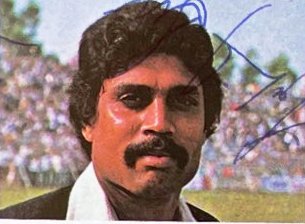Fitness matters, but, Kapil Dev knew exactly how much his body could take. This was his greatest asset. The Indian pitches in general are not conducive to fast bowling, which in itself makes life difficult for liar last bowlers. Thus, added to that is the humid weather that prevails in most parts of the country for the better part of the year, making training a tough proposition.
Until a few years ago the concept of training was very much a grey area and whatever methods were adopted were done so without any scientific background. A well-equipped gymnasium was hard to come by which meant that the fast bowlers were handicapped, even further, when it came to enhancing their fitness levels.
The realization of the need to train in a scientific way came with the influx of the ‘Australian way’ of playing cricket — in India. The Australians have a history of training hard and even more so in the case of fast bowlers. The Australian teams train in a systematic manner, wherein the schedule ensured that all-around development is achieved. However, the extent to which the Australian methods and workload that the Indians could adopt was a tricky balance to strike.
Read More – Kapil Dev – A True Quickie in The Making

The need to train scientifically gained momentum in the late 1990’s and it was not until the start of the millennium that the Indian team had a professional to take care of its training needs. With the lack of proper facilities and training culture, Indian cricket needed to be educated from the top down about the importance and the need to enhance fitness levels.
The BCCI, in its quest to create awareness at the grass-roots level, made it mandatory for all the state associations to put up a gymnasium for the benefit of junior and first-class cricketers: Apart from passing this directive, the state associations were asked to engage a qualified trainer to be a part of the teams. This move ensured that cricketers at the junior level got into the training habit at an early age, which enabled them to match up to the demands of the senior and international levels as and when they got there.
Though the idea of each state team having a trainer in place is good, what really will produce results is the ability of the trainer to devise the right kind and amount of training to suit an individual. I have seen some trainers make the entire team go through the same schedule and the same aspect of training, which made it a chore and didn’t achieve the desired results.
What exactly constitutes fitness is a question that needs to be answered. To me, fitness should be such that it does not hinder one’s efficiency on the field. Several young, promising cricketers have vanished due to two reasons: excessive training and the discontinuation of a given training schedule.
Excessive training is when youngsters suddenly start pumping iron to emulate their favorite movie stars or with the stupid notion of getting twice as fit overnight. The other side of the spectrum is that of youngsters discontinuing training after attending well-structured coaching camps where they are educated on the importance of systematic training.
Regardless of the amount of training done or not done, the key to it all is that fitness training should be done in such a manner that it does not get one mentally jaded. A player cannot perform unless he is mentally fresh when he gets into a game.
All aspects of training, like speed, endurance, and weights, have to be done in the right proportion in order to achieve the desired results. This, of course, would vary from one individual to another, but fast bowlers need to work on all aspects of training as they really expend a lot of energy. But amidst all the brouhaha about the need for the latest techniques in training to be followed, I suspect the Indian trainers are slowly losing track of the core strength of the Indian body’s flexibility.
The focus in Indian circles seems to be more on making the faster bowlers stronger by employing weight training. I believe they must also be made to stretch quite a bit to achieve a certain degree of flexibility. I have known quite a few really fit guys who were extremely flexible. Robin Singh, for instance, was supremely fit and he trained in all aspects, but his flexibility is what kept him free of injuries.
One of the key factors that helps one maintain a certain level of fitness and keep injuries away is in knowing your own body. By that, I mean you must be able to decide or know when you need to give your body a break. This was Kapil Dev’s greatest asset —he knew exactly how much his body could take. No wonder he played for India for so long, considering he lacked the facilities and the science of training during the first half of his career. As a fast bowler, it’s not enough to simply be fitter than the rest. One also needs to strike the right balance when it comes to the quantity of training. Let’s declare, fitness matters in modern cricket.
